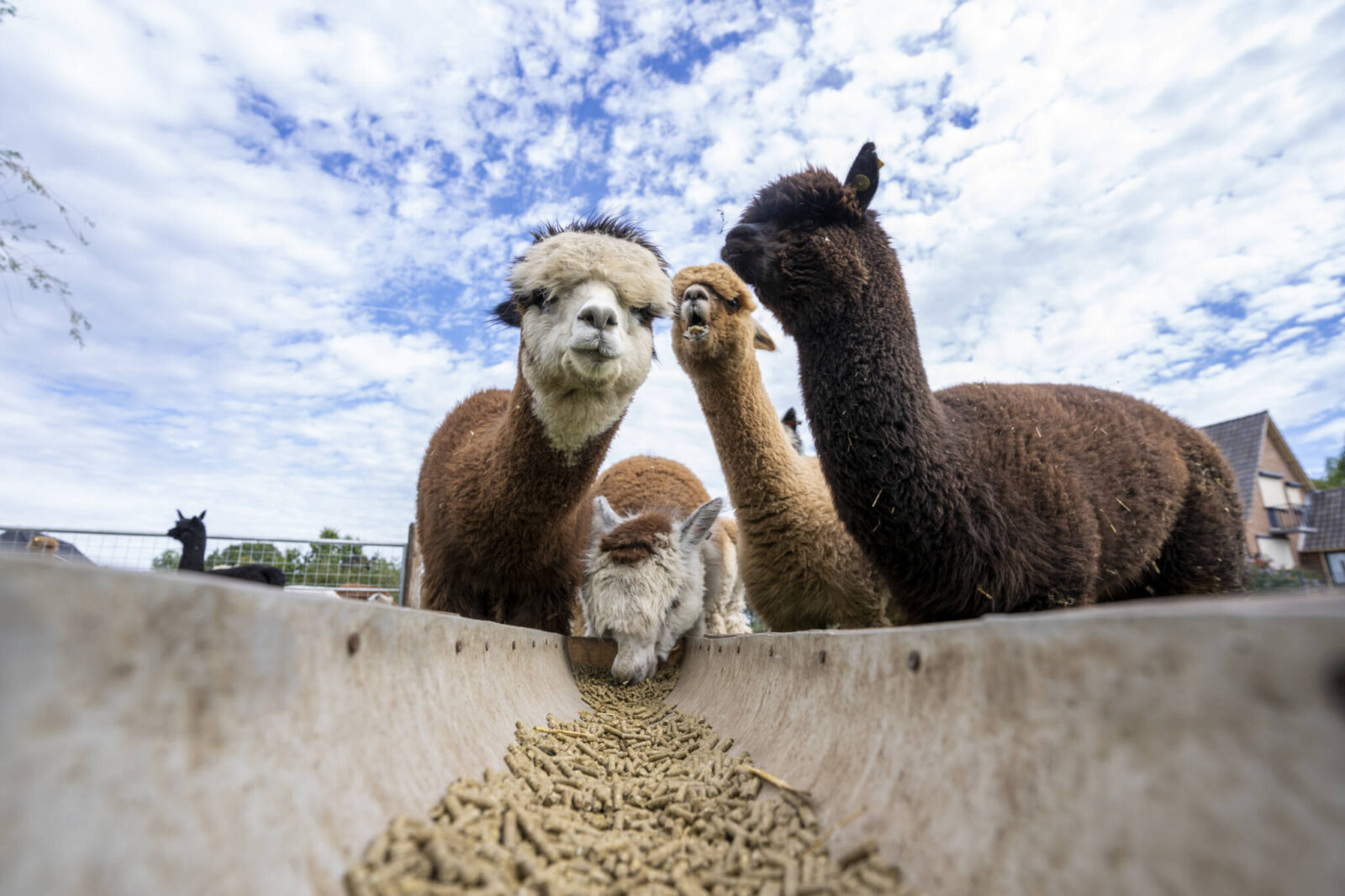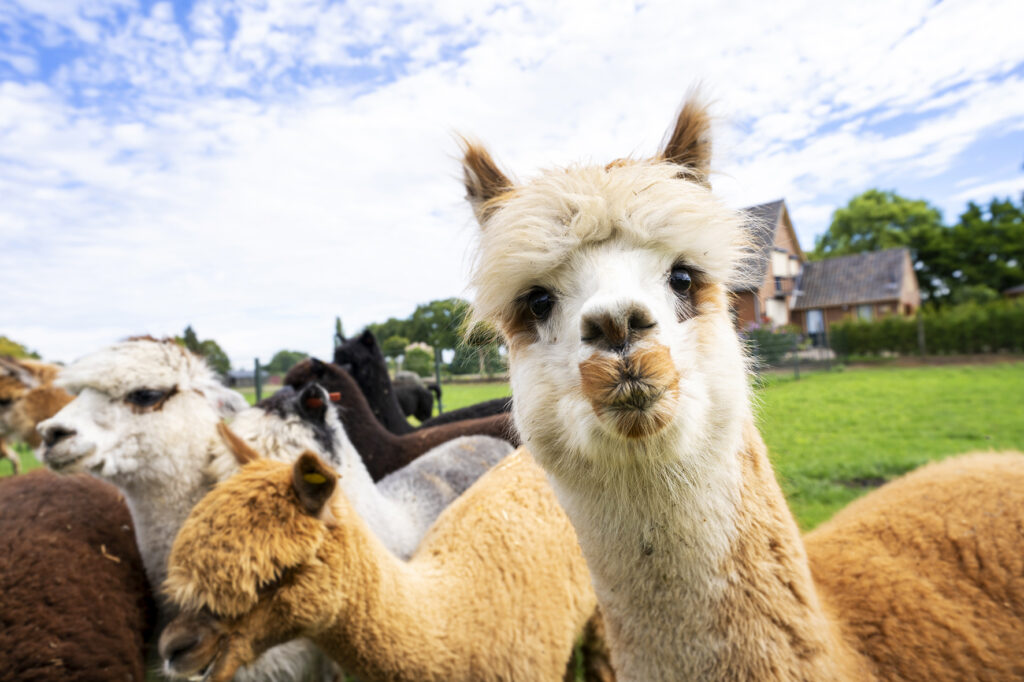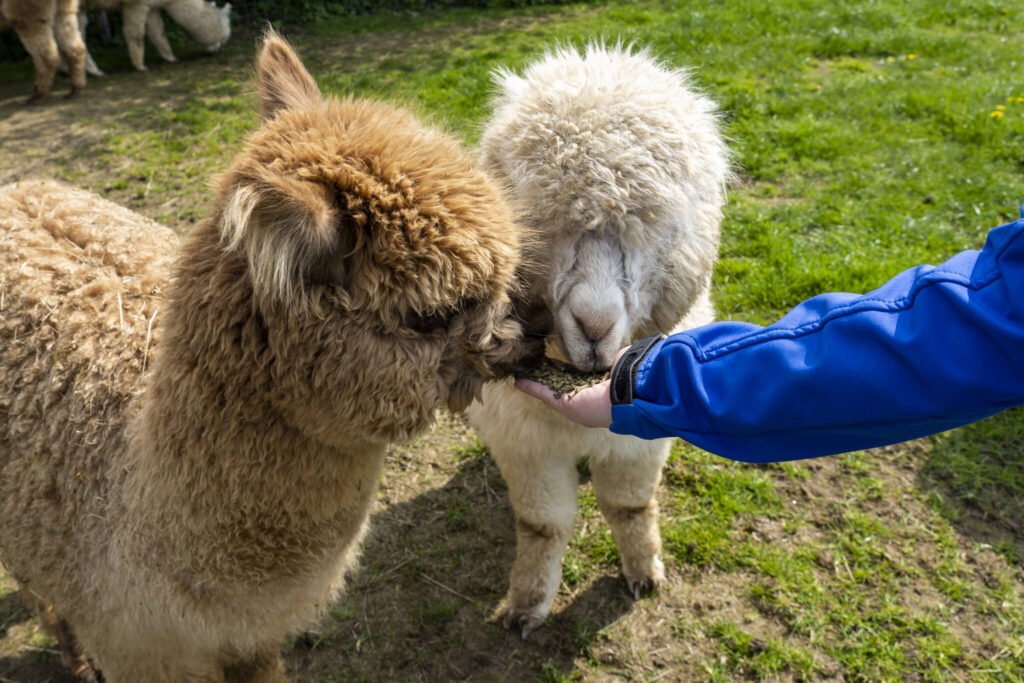Alpacas are true grazers, but in addition they eat a little bit of different kinds of plants. They eat about 2% of their body weight per day. What nutrition for alpacas consists of and what exactly they need in terms of roughage and supplementary feeding, we discuss in this blog. Whether you have alpacas or are considering purchasing some, after reading this blog you’ll be updated on all ins and outs of alpaca nutrition.
Basic needs
The basic needs of alpacas include: water, energy, protein, fibre, vitamins and minerals. It is essential to provide the first four nutrients (water, energy, protein and fibre). When that’s all set up, you can supplement with vitamins and minerals.
As with any animal, water is an important part of the diet. Provide fresh and clean drinking water for alpacas at all times.
Alpacas are very efficient when it comes to absorbing nutrients (protein and energy) from the feed they are given.
Roughage
Grazing and roughage should always be available for alpacas. This is the basis of a healthy diet for alpacas. Alpacas tend to prefer pastures with short grass. Pasture management is very important here to avoid the risk of worm infestation. High vitality of the animals also provides natural resistance to worms!
Provide alpacas with good quality hay (short, fine, second harvest). But, how do you figure out the quality of hay?
Looking
- Maturity
Look for the presence of seed heads. The more seed heads, the more mature the hay - Leaf-stem ratio
Determine if more stems or leaves are present. Prefer high amounts of leaves and stems that are fine and less present - Foreign objects
Check the hay for foreign objects such as wire, poisonous plants or fungi
Feel
Feel the stiffness and coarseness of the leaves and stems. Good quality hay feels soft and has fine, pliable stalks. Tip: see if you can wrap the stalks around your finger without breaking.
Smell
Good quality hay has an odour similar to freshly cut grass. It should not have a musty or mouldy smell.
Pellets
Grass and roughage do not contain all the nutrients an alpaca needs. Therefore, concentrate should be fed in addition. This supplements the vitamins and minerals, but you can also supplement any other necessary nutrients when needed, for example during gestation, lactation or growth.
Pellets for maintenance
Do you feed pellets as maintenance pellets? Then a vitamin and mineral pellet is sufficient to provide all nutrients in addition to roughage. For this, 6006 alpaca plus, for example, is a suitable product.
Pellets during gestation, lactation or growth
Gestation
During the third part of the gestation period, nutritional requirements increase. The extra nutrients required ensure a foal that grows well and healthy in the womb while the mother also gets enough to maintain a good condition.
Lactation
After birth, the foal will drink milk from the mother for about 6 months. During this period, the mare will also need more nutrients to maintain her own physical condition and provide the foal with sufficient milk.
Growth
After about 6 months, the foal will start to eat solid food. Growth is still in full swing and more feed is also needed to support its development. When the foal has grown and reached adult weight, the amount can be reduced to maintenance amount again.
Curious about the nutrition alpacas need when they’re pregnant, lactating or growing ? Then send an e-mail to advies@garvo.nl or ask for Mariska Hooijer (product advisor) when you call 0313-472321
Feed quantity
The amount and type of feed depends on the individual animal. This is why it is important to always keep a close eye on your alpacas. The following factors affect the amount of feed to give to your animals:
- Ambient temperature
- Current/wanted condition
- Increased need due to e.g. gestation, lactation or growth
- Current/wanted weight (use the body condition score to see what applies to your animals)
Note: gelded males have a lower energy requirement than intact males.
TIP: Prevent commotion at the feeding trough and ensure sufficient space. That way shyer animals – and the more dominant ones – will get enough food without scaring each other away.




